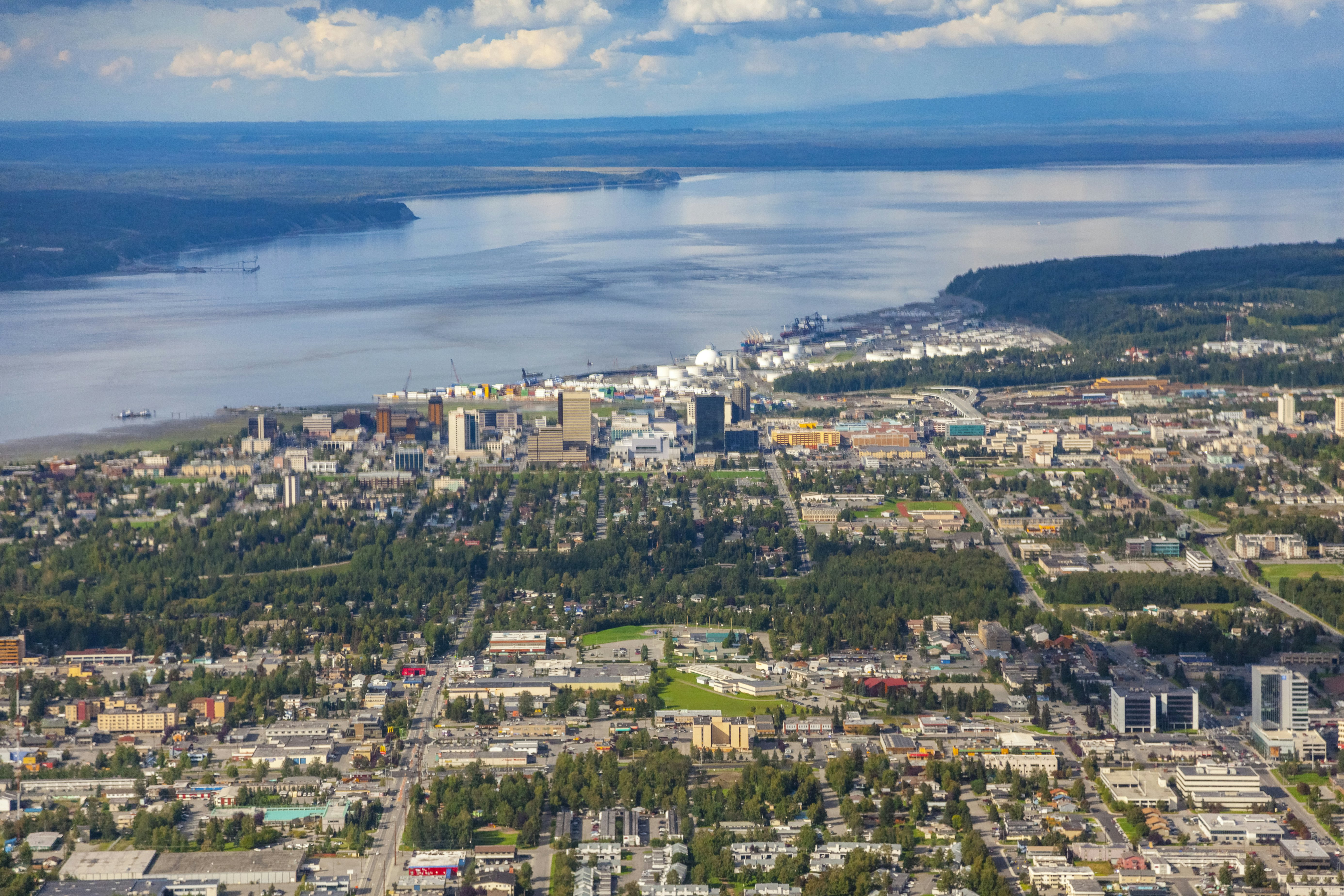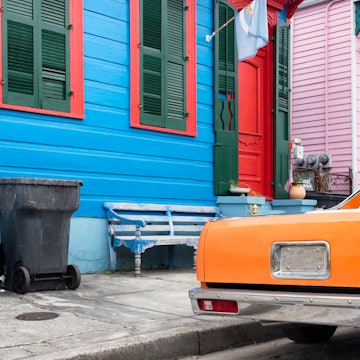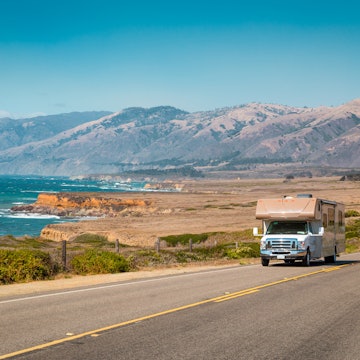

Alaska’s most populous city is as sprawling as the state itself – making driving the best way to get around. But not the only way. Getty Images
A running joke in Alaska goes that if you divided the state in two, Texas would still only be the third-largest U.S. state. Illustrating the point, the Last Frontier’s largest city, Anchorage, encompasses some 1961 sq miles from Portage Glacier to Eklutna – about the size of Delaware.
Anchorage is sparsely populated for its immense size, which makes public transport somewhat unviable. What’s more, subzero temperatures in the winter put a damper on pedestrian traffic. Yet don’t let these extremes discourage you: depending on your itinerary, there are several different ways to get around this quirky and appealing city.

Explore downtown Anchorage on foot
Anchorage's core neighborhood is also its most walkable district. Built on an easy-to-navigate grid, downtown is home to numerous hotels, restaurants, bars, shops, art galleries and the state's largest mall. In the summer, you can walk most of downtown in an hour, and guided tours will take you on an informative jaunt through Anchorage's most historic sites – and, more importantly, past the city's best hot dog vendors. As downtown is relatively flat, walking is suitable for children and adults of all physical fitness levels.
Keep in mind, though, that traveling on foot can be a major bummer in the cold, dark months of winter – which means it’s a good idea to rent a car during this season, even if you’re just planning to stick to downtown. While finding a parking spot is relatively easy in the winter, it can get expensive: downtown parking on weekdays between 9am and 6pm has a two-hour time limit and typically requires feeding the meters. The parking lots scattered around downtown can be more convenient, yet can cost $10 to $30 a day.

Use People Mover buses to get around Midtown
Outside of the downtown area, walking isn’t the best idea given the vast distances and some unsafe areas. Luckily, Midtown is well served by buses originating from the downtown bus depot – a network known locally as the People Mover. The #40 will take you to the airport and the funky Spenard area, while the #65 will take you to Jewel Lake, which is packed with stunning walking trails.
Keep in mind that many routes only run once an hour, and bus stops can be up to a half-mile away from each other. If you want to get to the south side of town, the bus only runs during rush hour. Additionally, bus routes shut down before 8pm on weekends, which can put a damper on nighttime fun.
Still, if riding the bus is the right option for your itinerary and budget, consult the People Mover website for bus trackers, trip planners and maps. Fares range in price from $2 for a single ride to $26 for a week-long pass. If paying in cash, exact change is required.

Rent a car to visit the Southside (and beyond)
Situated nearly 20 miles from downtown, Anchorage’s Southside is home to epic hiking trails, panoramic mountain views and one of the most scenic stretches of highway in the USA. Unfortunately, it’s also one of the only areas in town that cannot be accessed by foot or public transport. There’s taxi service in some parts, true – but to get to any of the hiking areas, you’ll have to rent a car. Just make sure it has four-wheel drive if renting during the winter.
Rental prices are highly dependent on the season. In the shoulder season from October to May, you can get a car from national companies like Hertz, Alamo and Avis for as low as $36 a day, though the price jumps to as much as $236 a day from June to August.
A newer option is the car-sharing platform Turo, which allows you to rent directly from local car owners – though prices match demand and can be as exorbitant in the summer as those of the major rental companies. You may be able to snag a better deal on Facebook Marketplace; just be wary of scammers.

Accessible transportation in Anchorage
Anchorage is surprisingly wheelchair accessible. After the 1964 earthquake, much of the city had to be rebuilt, which left room for such sidewalk improvements as curb cuts. What’s more, many buildings were reconstructed with wheelchair ramps, which means there are very few public places in the city that are not ADA-compliant. In addition, Anchorage’s predominantly level ground and flush sidewalks lend themselves to wheelchairs.
In terms of public transport, all Anchorage buses are fully accessible, with ramps, voice announcements, priority seating and well-trained bus drivers. Alaska Yellow Dispatch also offers wheelchair-accessible vans that operate everywhere in the city. If you are looking to rent an accessible vehicle, know that each rental agency is required to have at least one such car in their fleet – even though these cars are often unavailable on consecutive days, making planning ahead vital. Once you are in your car, expect smooth sailing thanks to ample handicapped spaces, ramps and friendly locals.
















